KALAMAZOO, MI -- Police say investigators are looking at a process that was used to mount a tire on a large front end loader as the potential cause of an explosion that took the life of a worker on Aug. 1 at the Kalamazoo Pallet Co.
"The process that the guy was using to take the tire off or put it on involved some kind of a gas," said Chief Jeff Hadley, of the Kalamazoo Department of Public Safety.
He said the investigation is still in its preliminary stages but ether is the gas involved. "The belief is that he used too much," Hadley said. "There was some indication that he used too much."
Officers say Christopher Hugh Murdock, 45, of Kalamazoo, was killed in a mishap that occurred shortly after 2 p.m. on Aug. 1, outside the Kalamazoo Pallet Co., at 2215 Palmer Ave.
Emergency responders began first aid on Murdock and continued until it was determined he had died from his injuries, officers said.
The incident is being investigated by the General Industry Safety & Health Division of the Michigan Occupational Safety and Health Administration. That office has not disclosed its findings.
"MIOSHA cannot provide information on an open investigation," spokesman Kevin Ray said in an email response to questions about the case.
He said the division's investigation may take several weeks or months to complete.
Company owner has John Beslin declined to comment on the matter, but a worker at the scene following the explosion said ether had been used to mount one of the tires on a large General Motors/Terex front end loader.
The front end loader was being used to move discarded wooden pallets from an area at one end of the pallet company's facility to another area where they could be chipped and grinded up, a worker said.
When ignited with fire, ether can be used around the rim of a rubber tire to create a fast, small explosion that fills a tire and instantly seals the tire on the rim of a wheel.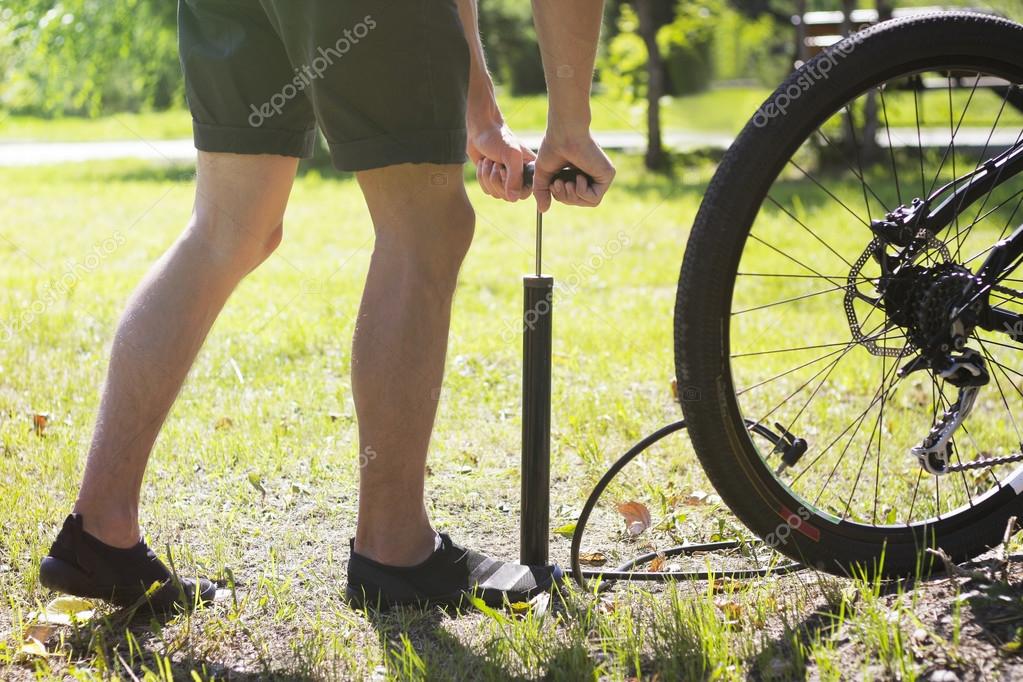 Examples of using ether, rather than air, to quickly fill and mount a tire are not difficult to find online. Nor are warnings that doing so can be hazardous and that it is difficult to avoid over-inflating a tire using that process.
Examples of using ether, rather than air, to quickly fill and mount a tire are not difficult to find online. Nor are warnings that doing so can be hazardous and that it is difficult to avoid over-inflating a tire using that process.
Workers said Murdock had worked for Kalamazoo Pallet for less than three months when the mishap occurred. An obituary posted online by Life Story Funeral Homes stated that Murdock worked in building maintenance for the pallet company for about two months.
In the obituary, he was described as a friendly, active and thoughtful man who loved jokes and loved his family. He was a former machine operator who was born in Kalamazoo but also lived in the Vicksburg, Mendon and Detroit areas at various points in his life. He is survived by his companion of more than 24 years, Jill Mattimore, and four children.
If you purchase a product or register for an account through one of the links on our site, we may receive compensation.
HMS_Irruncible
#1
I have a tubeless wheelbarrow tire which has gone flat and unmounted from cold weather exposure, and I have none of the things you’d normally use to re-mount it. However, I have gotten an education from YouTube, which says you can spray starter fluid in or around the rim, ignite it, and the tire will magically mount.
However, I have gotten an education from YouTube, which says you can spray starter fluid in or around the rim, ignite it, and the tire will magically mount.
So I have 2 questions:
Exactly how is the ether supposed to be applied for optimal results? In most of the videos it wasn’t really clear whether they were spraying it inside the tire or just on the sidewall around the rim.
In physical terms, what’s actually happening here?
Finally, a disclaimer, I am going to try this no matter what dire warnings are presented, because I am a pyro and I am too lazy to do it the proper way with the proper tools (but don’t worry, I’ll wear eye protection and keep a safe distance).
Busy_Scissors
#2
Sounds like a bunch of arse - but try it and let us know the results. Is the idea that the pyrolysed solvent lays down some sort of organic residue that acts as a lubricant for the tyre to slide onto the rim maybe?
Is the idea that the pyrolysed solvent lays down some sort of organic residue that acts as a lubricant for the tyre to slide onto the rim maybe?
I use tubeless tyres on my bike and they are mounted with either my hands or a set of tyre levers, depending on how tight the bead is. You could probably improvise a couple of spoons for levers if you don’t have any for the barrow.
gotpasswords
#3
The force of the deflagration jams the tire’s beads against the rim. It’s essentially a small-scale explosion inside the tire.
Seating the bead is what usually stands in the way of DIY tire changing. Most folks at home don’t have an air compressor that can deliver a big chunk of air rapidly enough to seat the bead - what usually happens is the air they’re trying to pump in just blows right past the open bead and there’s not enough force behind it to move the sidewall into contact with the rim.
Johnny_L.A
#4
gotpasswords:
The force of the deflagration jams the tire’s beads against the rim. It’s essentially a small-scale explosion inside the tire.
Seating the bead is what usually stands in the way of DIY tire changing. Most folks at home don’t have an air compressor that can deliver a big chunk of air rapidly enough to seat the bead - what usually happens is the air they’re trying to pump in just blows right past the open bead and there’s not enough force behind it to move the sidewall into contact with the rim.
I assume that the OP means mounting the tire, which is putting it on the rim, as opposed to inflating a tire that’s already mounted on the rim but isn’t sealing. No answer to the OP if my assumption is correct, but I’ve run into the problem of not being able to fill a mounted tire. First I tried an electrical compressor. No joy. Then I went to the gas station to use their air. That didn’t work either. Then I tried my SCUBA tank. Nada. Finally I tied a rope tightly around the middle of the circumference of the tire, which forced the bead against the rim. A quick shot from the SCUBA tank and it was good.
No answer to the OP if my assumption is correct, but I’ve run into the problem of not being able to fill a mounted tire. First I tried an electrical compressor. No joy. Then I went to the gas station to use their air. That didn’t work either. Then I tried my SCUBA tank. Nada. Finally I tied a rope tightly around the middle of the circumference of the tire, which forced the bead against the rim. A quick shot from the SCUBA tank and it was good.
HMS_Irruncible
#5
Johnny_L.A:
I assume that the OP means mounting the tire, which is putting it on the rim, as opposed to inflating a tire that’s already mounted on the rim but isn’t sealing.
Actually I was talking about a tire that is already mounted on the rim but cannot be inflated for the reasons already described, that apparently you need a big charge of pressure to blow the tire against the bead.
My main question is whether to put the fluid in the tire, or on the tire. Common sense would suggest you’d put it in the tire, but in a number of the YouTube videos, the guys can be seen clearly applying it to the sidewall, not even particularly close to the bead.
Zany_Zeolite_Zipper
#6
Firstly this is very stupid and very dangerous.
All the ether does is provide a big shot of air to force the bead against the rim, there is no burned whatever for adhesion. You can buy bead sealer, but I’ve never found it to work. So just fill the tire up with ether, it doesn’t matter where it goes, but it needs to be on the inside. Be careful not to get any on yourself, or on the outside of the tire. Stand well back when you toss the wick in. The most important safety precaution is to video tape the whole procedure, so that we can LOL if something goes wrong. Many of the old timers don’t have any arm hair because of this method of seating the tire.
Many of the old timers don’t have any arm hair because of this method of seating the tire.
Dallas_Jones
#7
Zany_Zeolite_Zipper:
Firstly this is very stupid and very dangerous.
Yes. The instructions for using ether/starting fluid to mount a tire onto a rim are instructions for having a tire blow up in your face.
Johnny_L.A
#8
Zany_Zeolite_Zipper:
Firstly this is very stupid and very dangerous.
Dallas_Jones:
Yes.
The instructions for using ether/starting fluid to mount a tire onto a rim are instructions for having a tire blow up in your face.
Cosmic Relief:
Finally, a disclaimer, I am going to try this no matter what dire warnings are presented, because I am a pyro…
Zany_Zeolite_Zipper
#9
Johnny_L.A:
This question’s brother is: “How do you make a balloon bomb with an oxi-acetylene torch?” The answer is, you don’t, but if you insist . . .
Philster
#10
Well, I’m not sure if ether is the preferred gas, but inflating tires in a similar way is most definitely NOT bunk.
I’ve seen it done in a documentary of a polar expedition. Two things were noted in the documentary. One was how they keep the tires at incredibly low pressure setting to enhance grip, and the other is how to re-inflate a tire in such extreme conditions.
To do so, they set the tire down across the ice, and the tire was most definitely separated from the rim – the bead was not in contact with the rim. They sprayed something around the rim, ignited it and PRESTO, the tire was inflated via a sudden burst. They then released a bunch of air, and drove on.
Riding around with very low air pressure meant the tire was much more likely to come off the rim, so they mastered the technique mentioned.
YMMV
.
smithsb
#11
Another take is the ether/burning on the tire bead will melt or soften the rubber (maybe some lubrication also) giving a more flexible seal allowing less air pressure to seat the tire on the bead.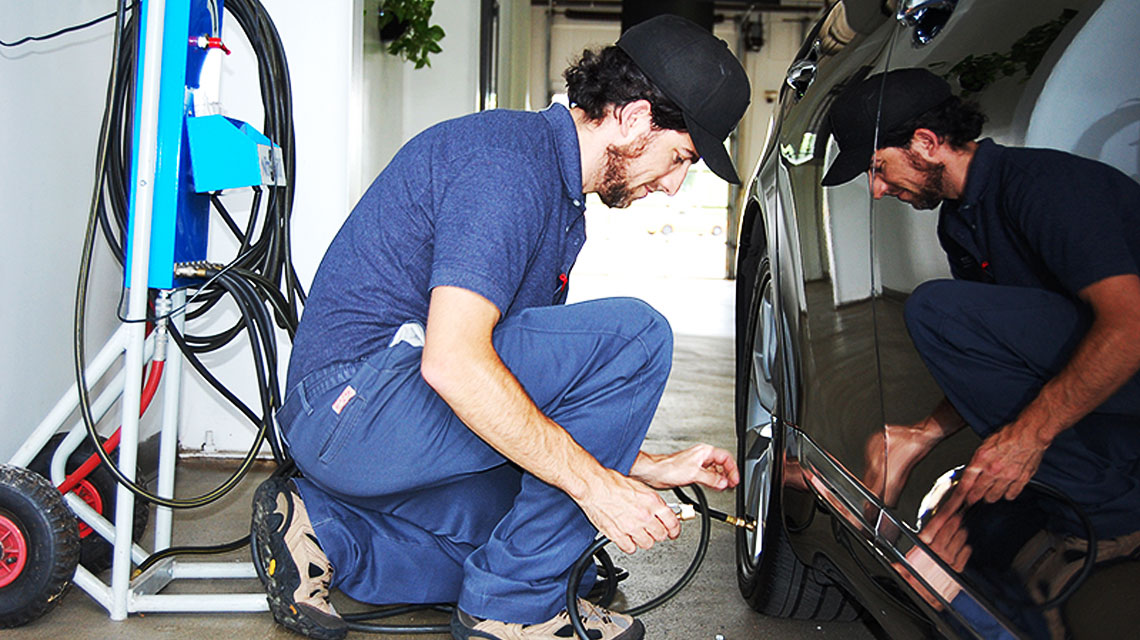 The ether would evaporate better than some other petroleum products which could attack the tire rubber if in contact longer.
The ether would evaporate better than some other petroleum products which could attack the tire rubber if in contact longer.
Another trick for sealing is using a soap and water mix; in this case - heavy on the soap. You could also use a bunch of cheap hand lotion to promote the seal.
I vote for potential serious injury as well if you use the ether.
Philster
#12
This references Top Gear’s North Pole Special and shows a similar demo:
Team-BHP.comInflating a tire with liquid fire
Ionizer
#13
Here’s a YouTube video showing this done to a small trailer(?) tire. I have seen this done first-hand at an old-timer’s tire shop, owned by a friend of my Dad, many, many times. Done it a few times myself on various size tires, but only as last resort.
I have seen this done first-hand at an old-timer’s tire shop, owned by a friend of my Dad, many, many times. Done it a few times myself on various size tires, but only as last resort.
When very little gas is used, a very small ‘explosion’ is all that happens - but knowing where the threshold is a learning experience. Trial and error is not the best way to figure out how to do it
racer72
#14
I have done this a number of times. Not really that hard, just dangerous. The tire must be solidly restrained when this is done. The first time I tried it the tire popped up into the air about 10 feet. This was a full size car tire, not sure how far something smaller would go.
Machine_Elf
#15
Ionizer:
When very little gas is used, a very small ‘explosion’ is all that happens - but knowing where the threshold is a learning experience.
Trial and error is not the best way to figure out how to do it
It appears that trial and error is the only possible way to go about this.
Seating the bead is what usually stands in the way of DIY tire changing. Most folks at home don’t have an air compressor that can deliver a big chunk of air rapidly enough to seat the bead…
This is strange to me. I’ve changed dozens of motorcycle tires at home, and a run-of-the-mill compressor with a five-gallon tank was entirely adequate to the task. Any compressor with a tank that can deliver ~100 psi, even for a short burst (before tank pressure fades away), is enough to get tire beads to seat.
Philster
#16
Ok, imagine the arctic, and it’s -45F on an expedition.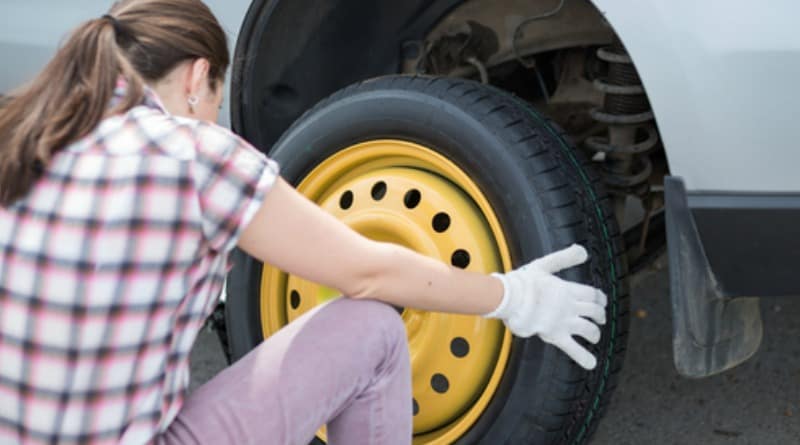 How to inflate tire???
How to inflate tire???
In the other video posted, the truck was bogged down in mud. Should we opt for the method that takes 30 seconds or less? Jack it up in the mud? Pull out a compressor in a jungle, etc?
Keep in mind, in the cases I mentioned, what practical options do you have, especially when the tires are coming off the rim with some frequency in extreme environmental conditions!?
billfish678
#17
Ionizer:
[When very little gas is used, a very small ‘explosion’ is all that happens - but knowing where the threshold is a learning experience. Trial and error is not the best way to figure out how to do it
Well, the OP could at least be smart enough to start the trial and error phase with using a VERY small amount of ether, then incrememting subsequent tests with very small additional amounts. Note, we are probably talking fraction of a small spoon amounts, if not actual drops.
Just, for the love of OG, don’t get all Tim the Tool Man Taylor with it on the first few tries. Its probably an actually good way to seriously hurt yourself.
ducati
#18
As a mechanic, I’ve done the ether thing, but only for fun.
The safer way to accomplish seating the bead is getting more air in the tire quickly.
No one ever thinks about this, but it’s worked for me and other mechanics for years: remove the valve-core from the valve-stem. It takes a special tool, but you can find one anywhere car parts and accessories are sold.
Once the core is out, you’ll be amazed at how much air will flow now. It will be enough to help you seat the bead. Now of course, when you remove your air hose, air will leak quickly as well, but now that the bead is seated, it doesn’t matter. Just screw the valve-core back in, and fill as usual.
Just screw the valve-core back in, and fill as usual.
Playing with ether is an excellent way to lose your hair, hearing, sight, or more.
That’s why it’s so much fun.
cornflakes
#19
Ugh. I did this a few times when I was a motorcycle mechanic to mount ATV tires. Customers would bring in tires that they bought elswhere and that were shipped flat, with the sidewalls touching each other. None of our usual methods of getting the beads to seat would work. We used gasoline instead of ether. While the tires would usually pop onto the rim by the third try, there were a few times that the gas on outside of the tire caught fire.
Having done this for a living, I will say that I never want to do it again and don’t recommend that anyone do it. For a wheelbarrow, I’d just buy a tube or a semipneumatic (solid) tire.
Related materials
If I change wheels, do I need to balance them every season?
Inflating a tire in the city is not a problem. There will always be a thrifty car enthusiast nearby who will lend a compressor. In extreme cases, you can drive to the nearest auto parts store and buy this useful device. But if the need to pump up the wheel caught on a long journey, on a deserted track, you will have to use your ingenuity.
A very banal way is to turn to professionals, that is, truck drivers. The fact is that any truck with pneumatic brakes can supply dried and purified air with high pressure through a hose that a thrifty truck driver always has with him.
Many gas stations now have tire inflation points, and perhaps the easiest way is to hitch a wheel to it and then return to your car in the same way. If all of the above did not work, then read about the tricks that we personally tested for effectiveness:
 Aerosol cans
Aerosol cans Attaching a can (any) to the nipple is not so difficult. The pressure inside the cylinder is 1.8-2.8 bar. It is important that the contents do not dissolve rubber and do not harden, such as building foam.
Here, of course, compressed air canisters are good for blowing, for example, office equipment. But the inner volume of a wheel of a small class car is about 20-25 liters. For pumping, you will need several boxes of cans. Unacceptably!
It is possible to connect the tire valve to the brake master cylinder connection after draining the reservoir. After that, we begin to press the brake pedal in the same way as is usually done when bleeding the brakes when replacing the brake fluid. To inflate the wheel, it will take a gigantic number of clicks. Unacceptably!
Connect the hose to the air path after the turbocharger. The boost pressure in the line between the compressor and the intake valves of conventional (non-sport) engines is not enough to inflate the wheel. No matter how you gasp - unacceptable!
No matter how you gasp - unacceptable!
Advanced car enthusiasts know the method of transferring the bead ring over the hump of the rim with the help of an explosion of fuel vapors. The Internet is full of videos on this topic.
It is usually advised to unscrew the spool from the valve. I wonder what will happen if this is not done? We need to keep up the pressure. We conducted an experiment and got an unsatisfactory result. With this method, it is possible to provide a very small pressure in the wheel - about 0.2 bar. The method really allows you to brilliantly cope with the task of transferring the sidewall through the hump, but it is not suitable for pumping!
And this is perhaps the most unusual way to inflate a tire. After conducting an experiment with a large 6-kilogram fire extinguisher, it was possible to raise the pressure by a completely ridiculous amount of a couple of tenths of a bar. And this despite the inverted spool. Everything around was covered with a rather nasty powder. Unacceptably!
Everything around was covered with a rather nasty powder. Unacceptably!
The average car owner usually has a powder-type fire extinguisher in the trunk. A powder fire extinguisher of a rather large volume worked very badly. It was not possible to pump up the wheel.
The average car owner usually has a powder-type fire extinguisher in the trunk. A powder fire extinguisher of a rather large volume worked very badly. It was not possible to pump up the wheel.
If you can attach a hose to the exhaust pipe, then you can inflate the wheel in this way. The engine is able to provide a pressure of two or more bars with a sealed exhaust system and if you “give it a gas”. The method is acceptable, but only as a last resort. The fact is that with this method, the catalytic converter, and even the corrugation of the exhaust system, may suffer.
The most difficult thing is to achieve tightness of the junction of a thin hose with an exhaust pipe.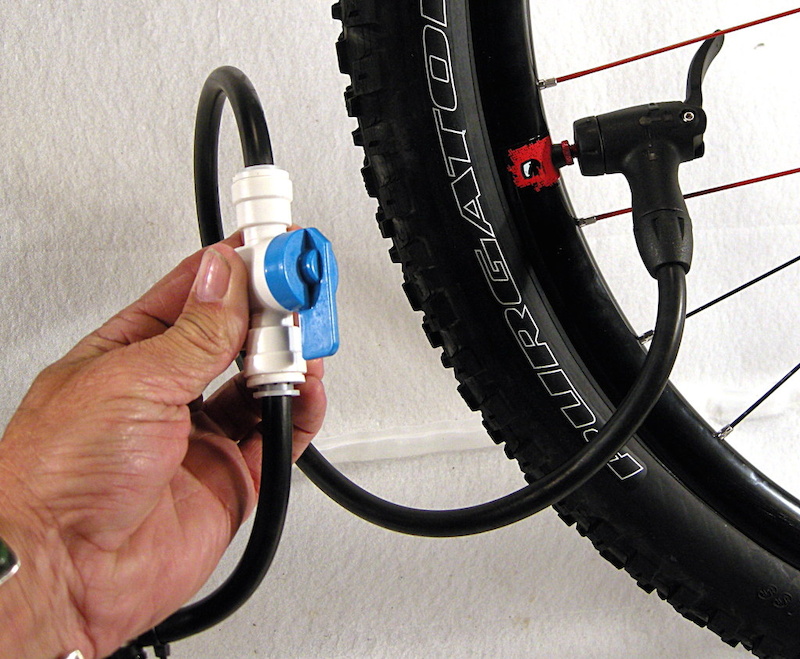 A variety of caps from bottles, washers, water squeegees can go into business. What will be at hand. Electrical tape will help seal the connection.
A variety of caps from bottles, washers, water squeegees can go into business. What will be at hand. Electrical tape will help seal the connection.
The most difficult thing is to achieve tightness of the joint between the thin hose and the exhaust pipe. A variety of caps from bottles, washers, water squeegees can go into business. What will be at hand. Electrical tape will help seal the connection.
Related materials
If you want to pump up a wheel, jack up the car! Debunking the Myth
Using a hose, you can transfer part of the air from other wheels to the one we need to inflate. The method is complicated, because the valve mechanism will interfere with such a procedure. If we turn out the spools, we risk leaving several wheels without air. But even if you manage to get by with minimal losses, the pressure in all the wheels will turn out to be insufficient. In the best case, 75% of the pressure will remain in the wheels. Without preliminary preparation, which consists in assembling a hose with two tips like those installed on the compressor, we do not recommend trying this method!
Without preliminary preparation, which consists in assembling a hose with two tips like those installed on the compressor, we do not recommend trying this method!
***
Alternative ways to inflate tires are complicated, inconvenient, require advance preparation and can damage your vehicle. Therefore, we advise you to always have a serviceable and inflated spare tire. And just in case, you should carry a portable electric compressor with you. It will be useful not for yourself, but for a less thrifty car enthusiast.
Our new video
Simplified UAZ Patriot - no ABS and pillows, Chinese box
A new brand has appeared in Russia - we are testing its first crossover
A new Russian SUV: we all really need it!
Did you like the note? Subscribe and you will always be in the know!
Driving on Yandex. Zen
Zen
News smi2.ru
When driving on virgin or very deep snow, the very first thing you should do is to walk on the intended route. This is how they scout the road in fords and thickets drivers-athletes participating in jeeps in various trophies and rally raids. They literally "probe" with their feet cover that is hidden under snow, water or mud in a swamp and over which the left or right wheel should roll. At your slightest doubt, "detection" with the foot of at least the slightest obstacle under the snow, look for another a rut or even a detour. Today we have snow wheels, and in chauffeur practice there are several tricks for the most different situations.
Let's go?
If the snow is not very deep (and the roadway is familiar to you), then it is better not to lower the pressure in the tires. pumped up (and narrow) tires gnaw through hard surfaces faster and slice more easily track. In addition, tire (and car) manufacturers are mandated to keep tire pressure according to the instruction manual, and some even officially DO NOT RECOMMEND to lower it.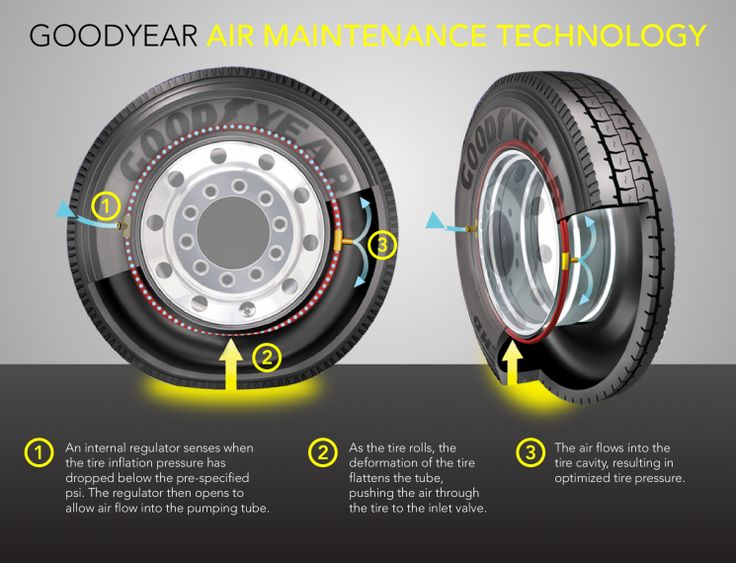 They attribute this to the fact that, they say, because of low pressure, there is a risk of tire damage, its disassembly at speed etc.
They attribute this to the fact that, they say, because of low pressure, there is a risk of tire damage, its disassembly at speed etc.
However, the same athletes (in virtually all disciplines, starting from autocross and ending with "heavy" and "long" disciplines) - and pump them up when you need 2-3 norms, and dump them to half, or even to quarters of prescribed pressures. For example, an overinflated tire allows the driver to high speeds and greater maneuverability on hard surfaces (on pavement), and half-flat gives a much larger contact patch of the wheel with impassable (dirty, loose, snowy) road.
But we continue on the topic: if the snow is deep, then we reduce the pressure in tires and create a "bigger" spot of their contact with the surface. First, improve adhesion, and secondly, the specific pressure on the ground is reduced. As An example and for comparison is ... snowshoes of Siberian hunters. Unlike from "ordinary" hunting shoes, due to a larger area of support and more even distribution of the load, they allow the hunter not to fall into snowdrifts to the waist.
We try to avoid turns, because when turn, each wheel travels along its own path, and the car has to "roll" not two, but four tracks. You can not accelerate sharply and slow down sharply, we do this exclusively by dumping the gas and smooth engine braking. And remember: the lower the pressure, the higher the probability of disassembling the wheel, therefore (I repeat) we move slowly through the snow.
A flat tire like a tank track or tractor crawls over an obstacle more easily. If the car is still burrows into the snow, then we reduce the pressure to one atmosphere, or even to 0.8 atm. However, remember that a flat tire "runs the risk of not living long", that is - you need to release pressure to travel a few meters (or, at most, tens of meters), but not hundreds! And on leaving a hard surface, the wheel unequivocally should be pumped up to normal.
Climbing uphill, slipping wheels you can still “make it work” by shaking the steering wheel left and right for small corners. Then the tires with their sidewalls, like the tips of claws, will to cling to the mini parapets of their own track.
Then the tires with their sidewalls, like the tips of claws, will to cling to the mini parapets of their own track.
And you will climb up.
Small drift or snow you can try to overcome the move (however, this is already, as you understand, with normal tire pressure). But if you suddenly feel that the car starts get stuck, then - “stop the car”! Engage reverse gear, roll back own track a little back, and again - forward!
It is also worth remembering that “the deeper into the forest”, that is, into the snow, the more likely it is to “sit on your belly”. If "just in virgin lands ”you can first dig two ruts for yourself, then in order to free A "sat down" car will have to be raked out far from under the bottom. And if you ran into also on snow with a hard top crust, and drive wheels in the literal sense hang, then work for you - for several hours.
In loose snow, a planted machine can be try to release the "rolling", alternately including the first and rear transmission. Moreover, not only on the mechanics, but also on the machine. However, if you have an automatic then remember that such loads are contraindicated for some structures. If a the robot is only “slightly tense”, then the variator can simply break down “on a flat place." But, one way or another (and also in the case of a traditional torque converter), after such loads, the box should be allowed to rest.
Moreover, not only on the mechanics, but also on the machine. However, if you have an automatic then remember that such loads are contraindicated for some structures. If a the robot is only “slightly tense”, then the variator can simply break down “on a flat place." But, one way or another (and also in the case of a traditional torque converter), after such loads, the box should be allowed to rest.
If the machine can no longer move forward and began to slip, then further - and do not try. Stop immediately otherwise, by slipping, you will dig the car even deeper into the snow. Get back in the back move along its own track to the place where a solid surface appears under the wheels support, and then try to fight your way through again. But remember that too having accelerated strongly, you can get into the situation described in two paragraphs above. And - depending on the force of inertia, as well as on the state of the snow cover - either a shovel or even a tractor!
If for frankly ice cover studded tires are definitely required, for brushed asphalt roads Velcro is perfect, then with snow there is no such unambiguity.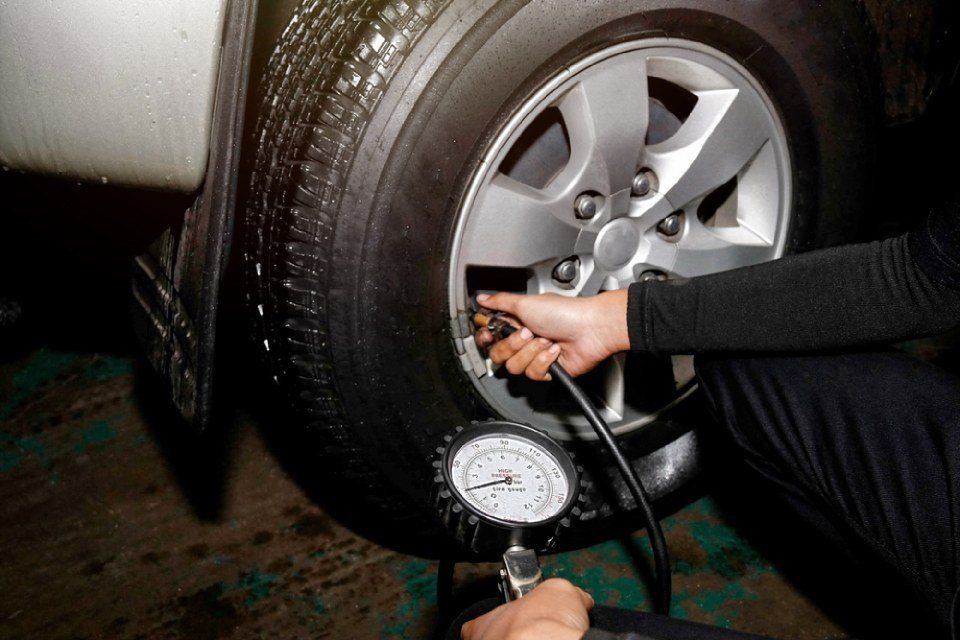 Furthermore, during the winter, every driver has to get on both bare ice and snow and ice porridge, and in deep snow. However, you can refer to called "frequency" and choose your tires for the winter as we suggested here in this article. But if you have to drive exclusively on snow anymore, even here there are some patterns - you can pick up!
Furthermore, during the winter, every driver has to get on both bare ice and snow and ice porridge, and in deep snow. However, you can refer to called "frequency" and choose your tires for the winter as we suggested here in this article. But if you have to drive exclusively on snow anymore, even here there are some patterns - you can pick up!
First, non-studded winter tires preferable because in "deep snow" the studs just don't work. Secondly, the choice of tread pattern, the composition of the silica, the percentage of the so-called "soot" in rubber - all this is "represented" in it much more widely.
For relatively "permanent" driving on deep snow, you need to take into account several of its features. For example, one should turn attention to the direction of the tread pattern; while other models have “up to directional" protector that is mounted on the wheel in only one position. Monolithic side ribs "evil" deep tread, which, as a rule, consists of v-shaped or diamond-shaped segments, always rows well in the snow. And, including snow porridge. In addition, such a protector effectively and perfectly self-cleans when out on hard surfaces.
And, including snow porridge. In addition, such a protector effectively and perfectly self-cleans when out on hard surfaces.
The engagement edges of the tire must be many, and the more “multidirectional” they are, the better. This cover is effective. both in the "longitudinal plan" (acceleration / deceleration), and in the "transverse" (entries into the turn and hold on the turn).
The so-called lamellas (fine slots) must also have a “different” orientation of their “Christmas trees” and a different step frequency. On the the patency of such a wheel is also affected by the complex toothed contours of the tread blocks, and the drawing itself should consist not only of blocks of different sizes, but also (also like lamellas) have a "variable pitch".
It must be remembered that slippery surfaces are slippery because this very "slipperiness" is provided to him by a thin water interlayer between snow (ice) and tire. This is especially evident in area of "near zero" temperatures or on a snow-reagent porridge.